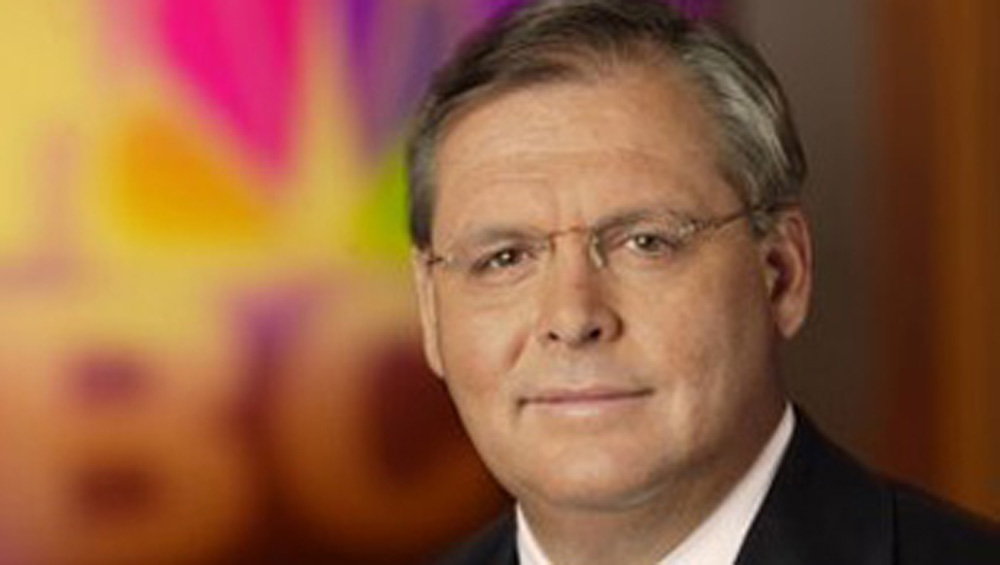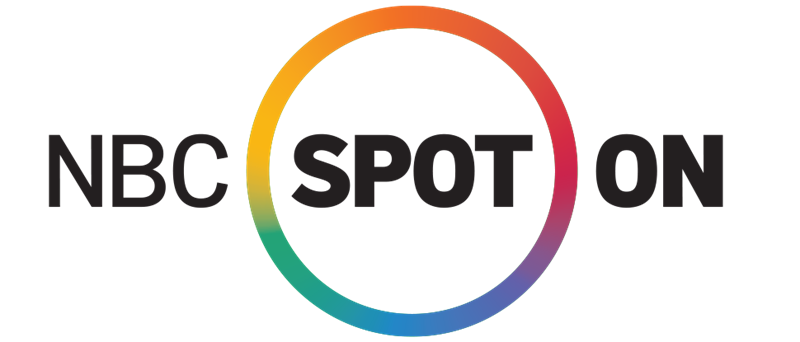
TVN Executuve Session | NBCU Grows Pay-Per-Performance Deals

There are a number of kinks in the wheels of progress for spot TV sales these days. But NBCUniversal’s local ad team is trying to resolve some of them in its own way.
Under the leadership of Frank Comerford, chief revenue officer and president of commercial operations for the NBCUniversal Owned Television Stations, silo walls have dropped between sales groups that were once separate and distinct. Local salespeople are booking pay-per-performance deals, making spot much more like digital in terms of guarantees. And the new NBC Spot On unit should make it easier for agencies to book streaming deals.
But Comerford’s unit is encountering problems with Nielsen’s measurement challenges in the COVID-19 era, and media fragmentation weighs on his mind. In an interview with TVNewsCheck Contributing Editor Janet Stilson, Comerford shared details about those pluses and minuses.
An edited transcript.
When you and I spoke during a webinar in June, you were concerned about the Nielsen sample. Are things getting better?
I don’t know. Nielsen is trying, but people aren’t really letting people in their houses during the COVID-19 crisis to play with the ratings box. So there are some issues still with the sample, and some markets are worse than others.
Which ones are the worst?
I don’t think I should really talk about that.
When Nielsen adds broadband-only homes to the sample, will that make it easier to sell over-the-top (OTT) alongside linear TV?
It should. Nielsen has to come out with their final plan. We don’t know what it is yet.
More inventory can be bundled. If somebody is watching a TV set — whether it is streamed, or it comes from a satellite, or it comes through the cable system, or it comes over-the-air through an antenna — the person watching doesn’t care and doesn’t really see the difference. So for an advertiser, the ability to reach all those different kinds of people is a plus.
Are agencies ready to price and buy OTT avails at this point?
Agencies are buying OTT and have been buying it for a while.
Everybody is on board?
Everyone is in different stages of how much they are buying. In some ways OTT acts like a daypart. Some people buy it as a purely digital product. Other people buy it just to jump to a TV. It depends on the client and the advertising they need.
Let’s talk about pay per performance. Is your division doing more of those deals? [With pay per performance, a seller guarantees a certain number of impressions or ratings points for a given flight. And if the spots fail to reach their agreed-upon goal, the seller credits the buyer for the cost of the flight or gives cash back.]
We have been doing more of it every day, and we call it Post In-Flight. With Post In-Flight, advertisers don’t come out of a flight getting 80% of what they purchased. They get what they paid for. In that way, it is like a digital buy. Traditionally in the spot marketplace each spot is purchased, not a bucket of impressions.
You’re using impressions for Post In-Flight?
Yes, and there’s two different kinds of attribution we give. We do Post-In-Flight-type buys where you say, “OK, you are going to deliver this many impressions, in this period of time, and in these day parts.” And then we have a secondary one where we use after-the-fact measurement to show that a TV campaign drove a certain behavior. And what you try to do is tie it to either website usage or some other data metric to verify how well the TV schedule works.
And that is part of the guarantee?
It can be, or it can be an additional marketing effort you make as part of the negotiated deal. You tell an advertiser: “We are going to give you this, and we are going to do this.” And you price it into the buy.
How much of the local station business is done on a Post In-Flight basis?
It is a small percentage at this point, but it is growing rapidly. And it is going to force us to really understand and manage our inventory better. We need to understand our numbers. That is why the Nielsen ratings get so important. They always were important, but we can’t have them missing huge swaths of the audience. We want everyone to be counted. Because we are committing to 100% posting, we need Nielsen to measure everyone that’s actually seeing the ad.
What are you using to figure out audience estimates when you make the original deal?
We use whatever we can, but Nielsen is the majority. You know, if you are doing a deal, some of it might be digital and come from [other measurement] systems. We want to include those impressions in the buy. That is why OTT can be very complementary to local broadcasts. You can take impressions delivered in linear broadcasts and combine them with impressions garnered through streaming.
How much time does it save your people to do Post In-Flight deals?
In the beginning, it actually takes more time. You have a deeper level of negotiation up front, and there is daily management of the delivery, but it saves a lot of time on the back end. As it becomes more routine, we’ll know how to structure these deals from experience. It stops the tracking of makegoods. And a lot of the post-buy work that has to be done now will be eliminated, for us and ad agencies.
Are there improvements that need to be made in the whole way that you are doing Post In-Flight or is it pretty much working the way you want it to?
We are constantly improving it. We need to — our system has got to be nimble and accurate. We are not done with it by any stretch. But that is why we can’t do 100% of our deals that way right now. But we are moving that way.
How long do you think it will take you?
I really don’t know. For some [clients], it doesn’t matter. The only thing that is worthwhile for them is [to run ads on specific] days, and there is going to be a premium, because they paid to be on those days. Other people will have a longer view. They probably don’t care as much about any particular day or date posting as long as you eventually get the brand awareness raised.
Your sales team has a broad mandate to sell local avails across English- and Spanish-language stations, OTT, out-of-home and regional sports networks. One of the most recent developments on that front is the creation of NBC Spot On, which is specific to local connected TV and OTT avails for the broadcast properties along with NBCU’s cable channels. How is that structure changing the game for you?
It gives us a competitor advantage in that we can bring a coordinated approach to an advertiser or an ad agency. They can do one-stop shopping on multiple platforms. It helps us really a lot with business development where we work in a consultative fashion with new advertisers. One person can put together all these different tools to give them a full marketplace view.
The NBC network has reduced its ad load. How does that affect you? Do you have less inventory to sell than you might have?
No. Our inventory is fixed. If they want to cut breaks, they can cut breaks. But they can’t cut local breaks because that is part of their agreement with the affiliates.
Concerning Spot On, does the inventory come from Comcast cable systems in order to get the benefits of geotargeting?
 We get inventory from a lot of different places, but one of the major suppliers for us is Comcast FreeWheel. FreeWheel is their inventory management system. We have other inventory access that we buy directly from other third parties. We have our own inventory. It is not just Comcast.
We get inventory from a lot of different places, but one of the major suppliers for us is Comcast FreeWheel. FreeWheel is their inventory management system. We have other inventory access that we buy directly from other third parties. We have our own inventory. It is not just Comcast.
Spot On is a nonlinear product, as compared to television, which comes over a cable system or through a satellite. Anything that can stream on the internet, we can make a deal and access inventory to bundle up. We work more closely with the national NBCU sales team than we ever have before. We can use some of the national digital inventory in Spot On.
Spot On has deals now not only with FreeWheel, but the other major software management system, MediaOcean. Does that make a big difference?
We are building a platform for Spot On that will make it easy for us and our advertisers to communicate. It is kind of what we wish we could do with linear TV right now, which you and I have talked about many times. Digital is a little bit further along in end-to-end communication.
Let’s change gears. I want to talk to you a little bit about automation. How long do you think it is going to take to get automated sales fully functional for spot, generally speaking?
That is one of those things we have been working on for so long. I can see progress, but I am not going to put a timetable on it. But we have a lot of vendors now interested. We just need to connect them. And people are working on it, and the technology is getting so much better. I think it can happen, at least parts of it, fairly quickly. Every day seems to be taking a step forward. I am not comfortable with a date.
I know one station executive predicted six years. Do you think it is going to take that length of time?
I hope not. I think we are making progress. People are identifying what needs to be done, how much it is going to cost. And I think the technology is out there. It is just making the deals at this point and linking all these different software providers.
Are there certain big challenges or brain teasers that are on your mind these days?
There’s a lot of them. I am lucky. I work for Comcast NBC, which is a great company that is very broad based. They are a media company; they are a technology company first and foremost; and they support our businesses.
What I worry about I guess is fragmentation making the overall profitability of the business go down. I mean that is one of the reasons why we are putting everything [i.e., so many local opportunities] together. We have a unique advantage in scale because we have English; we have Spanish; we have digital; we have cable. We are a company that is very well positioned in the media landscape. Our network team is doing the exact same thing.
We are positioning our teams to satisfy our partners, the ad agencies and our customers in the most efficient way possible. We really just want to make it easier for them to do business with us to get a satisfactory result. That is what is driving all these changes in all of these plans.
































Comments (1)
2018bstyrevr says:
August 25, 2020 at 8:02 am
If anyone can get this done effectively it’s Frank Comerford!!!